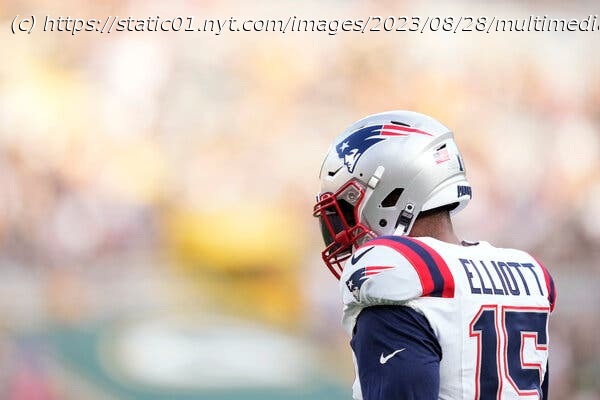A combination of factors has devalued one of the marquee positions in all of American sports.
N.F.L. running backs, once the face of many teams, have fallen so far in relative value over the last few decades that it has amounted to a public demotion.
They have seen their contributions derided by data analysts, and their pay slip in relation even to unglamorous offensive linemen. This past off-season, some staged holdouts and others organized a Zoom call to try to fight against their predicament. But the evolution of the game toward passing — and a salary structure that doesn’t reward their brief prime years — may mean that running backs never recover the market power they once had.
In 1997, Barry Sanders of the Detroit Lions was the second-highest-paid player in the league — a time when running back was still one of the marquee positions in all of American sports. Today, not a single one is ranked in the top 100.
And since 2011, the earliest year for which complete data was available, total pay for running backs and fullbacks has increased only about 11 percent. For every other offensive position, total pay has increased at least 90 percent.
To be clear, starting running backs still make a healthy living. Last season, among the N.F.L.’s 32 teams, the 32 highest-paid running backs made an average of $5 million. But the average pay of a top-32 offensive lineman last year was $16.9 million.
This year the highest-paid running back by reported average annual pay is Christian McCaffrey of the San Francisco 49ers at $16 million. This is only about 30 percent as much as the highest-paid quarterback, Justin Herbert of the Los Angeles Chargers ($52 million average).
There is no single reason running backs’ pay is flat; a confluence of factors is working against them.Teams prioritize passing — even though they still run the ball a lot.
While the N.F.L. has become more of a passing league than it was decades ago, by some surface-level metrics the typical game has not changed much. In 2000, rushing attempts accounted for 46 percent of all offensive snaps and 35 percent of all yards. In 2022, rushing attempts accounted for 45 percent of offensive snaps and 35 percent of all yards.
But not all yards are created equal. “Very few backs are weapons on third down,” when teams often pass to try to keep a drive alive, said Randy Mueller, a former general manager for the Miami Dolphins and New Orleans Saints.
The devaluing of running backs has coincided with their “devaluing on the field,” Mueller said. He pointed to McCaffrey’s ability as a pass catcher as the reason he commands such a large contract.






